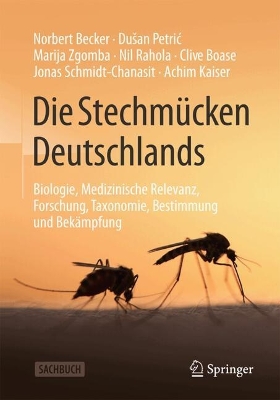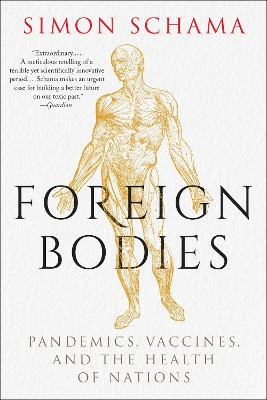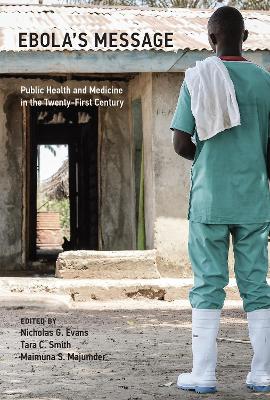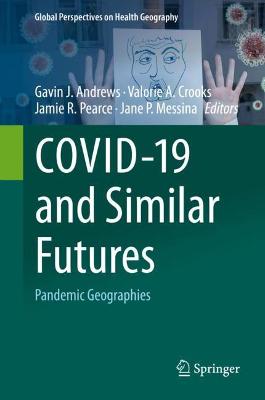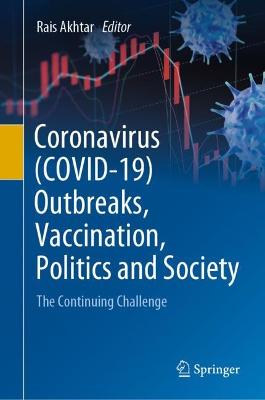COVID-19 and Similar Futures
 portes grátis
portes grátis
COVID-19 and Similar Futures
Pandemic Geographies
Andrews, Gavin J.; Pearce, Jamie R.; Messina, Jane P.; Crooks, Valorie A.
Springer Nature Switzerland AG
06/2022
448
Mole
Inglês
9783030701819
15 a 20 dias
706
Descrição não disponível.
Chapter 1. Introduction.- Chapter 2. Spatial Epidemiology: Challenges and Methods in COVID-19 Research.- Chapter 3. Disease Ecology.- Chapter 4. COVID-19 and the Political Ecology of Global Food and Health Systems.- Chapter 5. Setting a Death Trap: International Political Economy, COVID-19 Responses, and the Plight of Central American Migrants.- Chapter 6. Emergent Global Pandemic Risks, Complex Systems, and Population Health.- Chapter 7. Eight Centuries of Epidemic and Pandemic Control.- Chapter 8. Humanism and Social Constructionism.- Chapter 9. Mapping the Post-Structural Geographies of COVID-19.- Chapter 10. Non-Representational Approaches to COVID-19.- Chapter 11. How to Have Theory in a Pandemic: A Critical Reflection on the Discourses of COVID-19.- Chapter 12. Health Service Capacities, Responses, and Practice.- Chapter 13. Informal Care: The Forgotten Frontlines of COVID-19.- Chapter 14. Resilience, Risk, and Policymaking.- Chapter 15. Managing Internationally Mobile Bodies in a World on Hold: Migration, Tourism, and Biological Citizenship in the Context of COVID-19.- Chapter 16. Mobility is Dead: Post-pandemic Planning as an Opportunity to Prioritize Sustainability and Accessibility.- Chapter 17. Media and Information in Times of Crisis: The Case of the COVID-19 Infodemic.- Chapter 18. The (Social Distanced) Circle of Family, Friends, and Allies: How COVID-19 is Re-shaping Social Capital and New Opportunities for Research .- Chapter 19. The Syndemic Pandemic: COVID-19 and Social Inequality.- Chapter 20. Maintaining Wellbeing During and After COVID-19.- Chapter 21. Pandemic Geographies of Physical Activity.- Chapter 22. Surveillance, Control, and Containment (Biopolitics).- Chapter 23. Contradictory and Compounding: The Social Implications of COVID-19.- Chapter 24. Geographical Metaphors in Everyday Life.- Chapter 25. Vaccine Geopolitics During COVID-19: How Pandemics Thicken Borders, Exacerbate Violence, and Deepen Existing Fault Lines.- Chapter 26.Geographies of Digital Storytelling: Care and Harm in a Pandemic.- Chapter 27. Animal Geographies in a Pandemic.- Chapter 28. Environment and COVID-19: Unpacking the Links.- Chapter 29. Home in the Context of COVID-19.- Chapter 30. Death, Devastation, and Failure in Long-term care: The Need for a Geographical Re-engagement with the Sector.- Chapter 31. Re-figuring Public Spaces?.- Chapter 32. Consumer Spaces.- Chapter 33. The Place, Labour, and Networks of Transportation during COVID-19.- Chapter 34. COVID-19: Pandemic on an Urban Planet.- Chapter 35. Geographies of the Rural and the COVID-19 Pandemic.- Chapter 36. Global Spaces: COVID-19 and the Reconfiguring of Global Health.- Chapter 37. Why Green and Blue Spaces Matter More than Ever.- Chapter 38. COVID-19 in the Developing World: Curse or Blessing?.- Chapter 39. Art Spaces.- Chapter 40. Practicing Self-determination to Protect Indigenous Health in COVID-19: Lessons for this Pandemic and Similar Futures.- Chapter 41. #thenewnormaland the Pathological: Rethinking Human-Virus Relations during the COVID-19 Pandemic.- Chapter 42. Older People.- Chapter 43. Children and Families.- Chapter 44. Race, Ethnicity, and COVID-19: The Persistence of Black-White Disparities in the United States.- Chapter 45. Understanding the Importance of Gender for COVID-19.- Chapter 46. People with Disabilities.- Chapter 47. Participatory Research by/for the Precariously Housed in a time of COVID-19.- Chapter 48. Mental-ill Health and Anxious Pandemic Geographies.- Chapter 49. COVID-19 and Health Professionals: Recommitting to a Global Health Agenda.- Chapter 50. Labor Geography, Racial Capitalism, and the Pandemic Portal.- Chapter 51. Geographies of (Domestic) Alcohol Consumption.- Chapter 52. Public Geographies in a Post-COVID-19 World.- Chapter 53. Textures of an Epidemic: On the Necessity of Qualitative Methods in Making Better Pandemic Futures.- Chapter 54. Counting COVID: quantitative geographical approaches to COVID-19.- Chapter 55.GIS and Spatial Representations: Challenges and Missteps.- Chapter 56. New Forms of Data, New Forms of Opportunities to Monitor and Tackle a Pandemic.- Chapter 57. Knowledge Translation and COVID-19.- Chapter 58. Examining Geographical Visualizations of COVID-19.
Este título pertence ao(s) assunto(s) indicados(s). Para ver outros títulos clique no assunto desejado.
COVID-19;Health geography;Infectious disease;Spatial epidemiology;Immunology;Disease ecology;Public health;Big data;Medical Geography
Chapter 1. Introduction.- Chapter 2. Spatial Epidemiology: Challenges and Methods in COVID-19 Research.- Chapter 3. Disease Ecology.- Chapter 4. COVID-19 and the Political Ecology of Global Food and Health Systems.- Chapter 5. Setting a Death Trap: International Political Economy, COVID-19 Responses, and the Plight of Central American Migrants.- Chapter 6. Emergent Global Pandemic Risks, Complex Systems, and Population Health.- Chapter 7. Eight Centuries of Epidemic and Pandemic Control.- Chapter 8. Humanism and Social Constructionism.- Chapter 9. Mapping the Post-Structural Geographies of COVID-19.- Chapter 10. Non-Representational Approaches to COVID-19.- Chapter 11. How to Have Theory in a Pandemic: A Critical Reflection on the Discourses of COVID-19.- Chapter 12. Health Service Capacities, Responses, and Practice.- Chapter 13. Informal Care: The Forgotten Frontlines of COVID-19.- Chapter 14. Resilience, Risk, and Policymaking.- Chapter 15. Managing Internationally Mobile Bodies in a World on Hold: Migration, Tourism, and Biological Citizenship in the Context of COVID-19.- Chapter 16. Mobility is Dead: Post-pandemic Planning as an Opportunity to Prioritize Sustainability and Accessibility.- Chapter 17. Media and Information in Times of Crisis: The Case of the COVID-19 Infodemic.- Chapter 18. The (Social Distanced) Circle of Family, Friends, and Allies: How COVID-19 is Re-shaping Social Capital and New Opportunities for Research .- Chapter 19. The Syndemic Pandemic: COVID-19 and Social Inequality.- Chapter 20. Maintaining Wellbeing During and After COVID-19.- Chapter 21. Pandemic Geographies of Physical Activity.- Chapter 22. Surveillance, Control, and Containment (Biopolitics).- Chapter 23. Contradictory and Compounding: The Social Implications of COVID-19.- Chapter 24. Geographical Metaphors in Everyday Life.- Chapter 25. Vaccine Geopolitics During COVID-19: How Pandemics Thicken Borders, Exacerbate Violence, and Deepen Existing Fault Lines.- Chapter 26.Geographies of Digital Storytelling: Care and Harm in a Pandemic.- Chapter 27. Animal Geographies in a Pandemic.- Chapter 28. Environment and COVID-19: Unpacking the Links.- Chapter 29. Home in the Context of COVID-19.- Chapter 30. Death, Devastation, and Failure in Long-term care: The Need for a Geographical Re-engagement with the Sector.- Chapter 31. Re-figuring Public Spaces?.- Chapter 32. Consumer Spaces.- Chapter 33. The Place, Labour, and Networks of Transportation during COVID-19.- Chapter 34. COVID-19: Pandemic on an Urban Planet.- Chapter 35. Geographies of the Rural and the COVID-19 Pandemic.- Chapter 36. Global Spaces: COVID-19 and the Reconfiguring of Global Health.- Chapter 37. Why Green and Blue Spaces Matter More than Ever.- Chapter 38. COVID-19 in the Developing World: Curse or Blessing?.- Chapter 39. Art Spaces.- Chapter 40. Practicing Self-determination to Protect Indigenous Health in COVID-19: Lessons for this Pandemic and Similar Futures.- Chapter 41. #thenewnormaland the Pathological: Rethinking Human-Virus Relations during the COVID-19 Pandemic.- Chapter 42. Older People.- Chapter 43. Children and Families.- Chapter 44. Race, Ethnicity, and COVID-19: The Persistence of Black-White Disparities in the United States.- Chapter 45. Understanding the Importance of Gender for COVID-19.- Chapter 46. People with Disabilities.- Chapter 47. Participatory Research by/for the Precariously Housed in a time of COVID-19.- Chapter 48. Mental-ill Health and Anxious Pandemic Geographies.- Chapter 49. COVID-19 and Health Professionals: Recommitting to a Global Health Agenda.- Chapter 50. Labor Geography, Racial Capitalism, and the Pandemic Portal.- Chapter 51. Geographies of (Domestic) Alcohol Consumption.- Chapter 52. Public Geographies in a Post-COVID-19 World.- Chapter 53. Textures of an Epidemic: On the Necessity of Qualitative Methods in Making Better Pandemic Futures.- Chapter 54. Counting COVID: quantitative geographical approaches to COVID-19.- Chapter 55.GIS and Spatial Representations: Challenges and Missteps.- Chapter 56. New Forms of Data, New Forms of Opportunities to Monitor and Tackle a Pandemic.- Chapter 57. Knowledge Translation and COVID-19.- Chapter 58. Examining Geographical Visualizations of COVID-19.
Este título pertence ao(s) assunto(s) indicados(s). Para ver outros títulos clique no assunto desejado.

